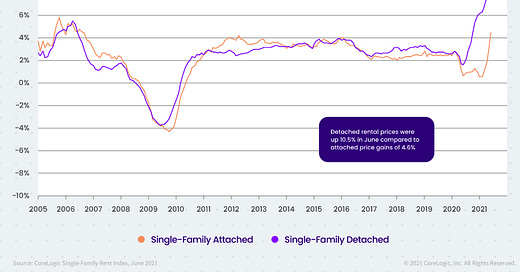Over the last several months there has been a pickup in rents, especially for single family homes.
There are three key questions:
What is happening with rents?
Why are rents increasing rapidly?
What will happen?
I don’t have all the answers, but I’ll offer some preliminary thoughts.
What is happening with rents?
Housing economist Tom Lawler has been sending me…
Keep reading with a 7-day free trial
Subscribe to CalculatedRisk Newsletter to keep reading this post and get 7 days of free access to the full post archives.



